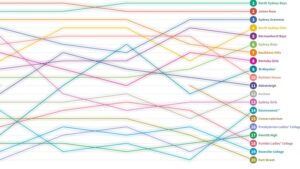
High blood pressure remains a significant and preventable risk factor for stroke, yet many Australians remain unclear about what their blood pressure numbers signify or how frequently they should be checked. As National Stroke Week highlights the importance of awareness, it serves as a timely reminder that approximately 80% of strokes are preventable, with blood pressure management being one of the simplest protective measures.
“High blood pressure is one of the leading risk factors for stroke, but it’s also one of the easiest to monitor and manage,” says Professor Beata Bajorek, a Heart and Stroke researcher at the Hunter Medical Research Institute and a clinical academic pharmacist at the University of Newcastle and the Hunter New England Local Health District. “The challenge,” she explains, “is making sure people understand how to take action before it leads to something serious.”
Decoding Blood Pressure Numbers
When you have your blood pressure checked, the reading consists of two numbers. The top number, known as systolic pressure, measures the force of blood against artery walls when the heart beats. The bottom number, or diastolic pressure, measures the force of blood when the heart is at rest between beats. A healthy reading is generally considered below 120/80 mm Hg. As these numbers rise, so does the risk of stroke, heart attack, and kidney damage due to increased pressure on blood vessels and impaired circulation to vital organs.
- Elevated blood pressure: 120–129 systolic, diastolic under 80
- Stage 1 hypertension: 130/80
- Stage 2 hypertension: 140/90 or higher
- Hypertensive crisis: 180 systolic or 120 diastolic, seek medical attention immediately
High blood pressure is often termed the ‘silent killer’ because it typically presents no symptoms, quietly damaging arteries and organs over time. Many believe they would notice if something were amiss, but this is rarely the case.
Common Misconceptions and Myths
One of the most significant knowledge gaps is the misunderstanding of blood pressure numbers and their importance. “That understanding can be the difference between preventing a stroke or having one,” Professor Bajorek emphasizes. “It is much easier to get your blood pressure under control than it is to undo any damage caused by a stroke.”
Misconceptions abound, such as the belief that only older individuals need to worry about high blood pressure. In reality, factors like diet, stress, alcohol, smoking, and a sedentary lifestyle can increase blood pressure at any age. Another myth is that a single high reading indicates hypertension. Blood pressure naturally fluctuates and can temporarily rise due to stress, caffeine, or even talking during a check. Diagnosis should be based on multiple readings over time and ideally at rest.
Best Practices for Monitoring Blood Pressure
Proper technique is crucial when checking blood pressure. Sit quietly for five minutes before the measurement, keep feet flat on the floor, support your arm at heart level, and avoid talking. Small factors, such as crossed legs or a full bladder, can affect results. If the initial reading is high, it’s advisable to recheck after five minutes.
For those with normal readings, blood pressure should be checked at least every two years. If readings are higher or if other risk factors like diabetes or obesity are present, more frequent checks may be necessary. Home monitors can track trends but should be used correctly and results discussed with a healthcare professional.
“Stroke prevention starts with awareness,” says Professor Bajorek. “If more people knew how easy it is to check their blood pressure, and how big a difference knowing those numbers makes, we would see far fewer preventable strokes.”
Preventive Measures and Lifestyle Changes
Lifestyle changes can significantly impact blood pressure management. For individuals with early-stage hypertension, reducing salt intake, exercising regularly, limiting alcohol, quitting smoking, managing stress, and improving sleep can lower blood pressure. When medication is necessary, it can be life-saving, and adherence to treatment plans is crucial. Various medications are available, and healthcare professionals will select the most suitable one for each patient.
As National Stroke Week continues, it is an opportune moment to understand your blood pressure numbers and consult your doctor if they fall outside the healthy range. Regular monitoring, comprehension of the numbers, and proactive measures are simple yet effective steps in stroke prevention.







